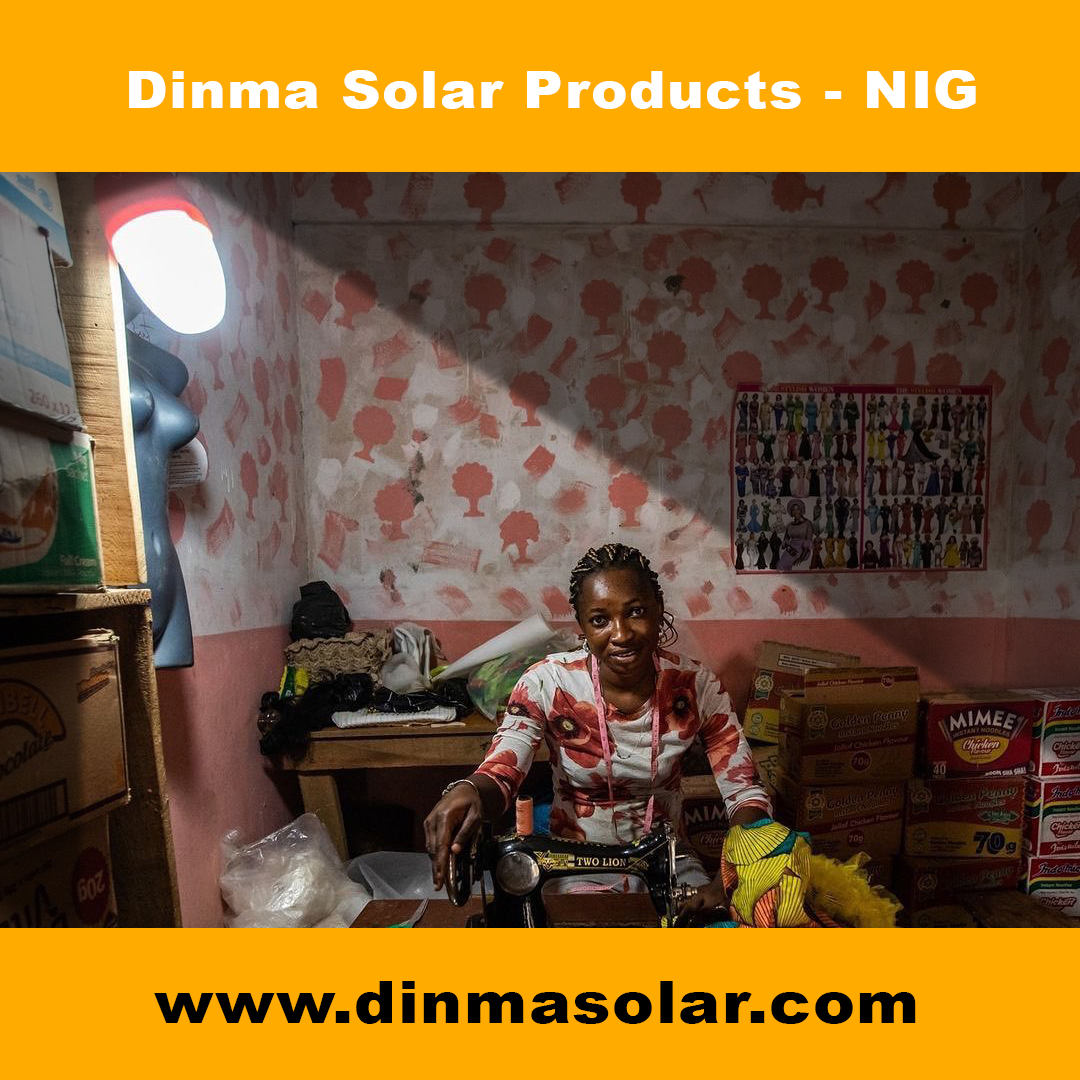Knowledge Center | Solar Energy
Since 2008, hundreds of thousands of solar panels have popped up across the country as an increasing number of Nigerians choose to power their daily lives with the sun’s energy.
Solar energy is radiant light and heat from the Sun that is harnessed using a range of technologies such as solar power to generate electricity, solar thermal energy (including solar water heating), and solar architecture. It is an essential source of renewable energy, and its technologies are broadly characterized as either passive solar or active solar depending on how they capture and distribute solar energy or convert it into solar power.
Active solar techniques include the use of photovoltaic systems, concentrated solar power, and solar water heating to harness the energy. Passive solar techniques include orienting a building to the Sun, selecting materials with favorable thermal mass or light-dispersing properties, and designing spaces that naturally circulate air.
Solar Radiation on Earth
The Earth receives 174 petawatts (PW) of incoming solar radiation (insolation) at the upper atmosphere. Approximately 30% is reflected back to space while the rest, 122 PW, is absorbed by clouds, oceans and land masses.
The spectrum of solar light at the Earth's surface is mostly spread across the visible and near-infrared ranges with a small part in the near-ultraviolet. Most of the world's population live in areas with insolation levels of 150–300 watts/m2, or 3.5–7.0 kWh/m2 per day.
Solar radiation is absorbed by the Earth's land surface, oceans – which cover about 71% of the globe – and atmosphere. Warm air containing evaporated water from the oceans rises, causing atmospheric circulation or convection. When the air reaches a high altitude, where the temperature is low, water vapor condenses into clouds, which rain onto the Earth's surface, completing the water cycle.
The latent heat of water condensation amplifies convection, producing atmospheric phenomena such as wind, cyclones and anticyclones. Sunlight absorbed by the oceans and land masses keeps the surface at an average temperature of 14 °C. By photosynthesis, green plants convert solar energy into chemically stored energy, which produces food, wood and the biomass from which fossil fuels are derived.
The total solar energy absorbed by Earth's atmosphere, oceans and land masses
is approximately 122 PW•year = 3,850,000 exajoules (EJ) per year. Photosynthesis captures approximately 3,000 EJ per year in biomass.The potential solar energy that could be used by humans differs from the amount of
solar energy present near the surface of the planet because factors such as geography, time variation,
cloud cover, and the land available to humans limit the amount of solar energy that we can acquire.
In 2021, Carbon Tracker Initiative estimated the land area needed to generate all our energy from solar alone was 450,000 km2 — or about the same as the area of Sweden, or the area of Morocco, or the area of California (0.3% of the Earth's total land area).
In 2000, the United Nations Development Programme, UN Department of Economic and Social Affairs, and World Energy Council published an estimate of the potential solar energy that could be used by humans each year that took into account factors such as insolation, cloud cover, and the land that is usable by humans. The estimate found that solar energy has a global potential of 1,600 to 49,800 exajoules (4.4×1014 to 1.4×1016 kWh) per year
Early commercial adaptation
In 1878, at the Universal Exposition in Paris, Augustin Mouchot successfully demonstrated a solar steam engine but could not continue development because of cheap coal and other factors. In 1897, Frank Shuman, a US inventor, engineer and solar energy pioneer built a small demonstration solar engine that worked by reflecting solar energy onto square boxes filled with ether, which has a lower boiling point than water and were fitted internally with black pipes which in turn powered a steam engine.
In 1908 Shuman formed the Sun Power Company with the intent of building larger solar power plants. He, along with his technical advisor A.S.E. Ackermann and British physicist Sir Charles Vernon Boys, developed an improved system using mirrors to reflect solar energy upon collector boxes, increasing heating capacity to the extent that water could now be used instead of ether. Shuman then constructed a full-scale steam engine powered by low-pressure water, enabling him to patent the entire solar engine system by 1912.
Shuman built the world's first solar thermal power station in Maadi, Egypt, between 1912 and 1913. His plant used parabolic troughs to power a 45–52 kilowatts (60–70 hp) engine that pumped more than 22,000 litres (4,800 imp gal; 5,800 US gal) of water per minute from the Nile River to adjacent cotton fields.
Although the outbreak of World War I and the discovery of cheap oil in the 1930s discouraged the advancement of solar energy, Shuman's vision, and basic design were resurrected in the 1970s with a new wave of interest in solar thermal energy.
Water heating
Solar hot water systems use sunlight to heat water. In middle geographical latitudes (between 40 degrees north and 40 degrees south), 60 to 70% of the domestic hot water use, with water temperatures up to 60 °C (140 °F), can be provided by solar heating systems. The most common types of solar water heaters are evacuated tube collectors (44%) and glazed flat plate collectors (34%) generally used for domestic hot water; and unglazed plastic collectors (21%) used mainly to heat swimming pools.
As of 2015, the total installed capacity of solar hot water systems was approximately 436 thermal gigawatt (GWth), and China is the world leader in their deployment with 309 GWth installed, taken up 71% of the market. Israel and Cyprus are the per capita leaders in the use of solar hot water systems with over 90% of homes using them.
In the United States, Canada, and Australia, heating swimming pools is the dominant application of solar hot water with an installed capacity of 18 GWth as of 2005.
Heating, cooling and ventilation
In the United States, heating, ventilation and air conditioning (HVAC) systems account for 30% (4.65 EJ/yr) of the energy used in commercial buildings and nearly 50% (10.1 EJ/yr) of the energy used in residential buildings.
Solar heating, cooling and ventilation technologies can be used to offset a portion of this energy. Use of solar for heating can roughly be divided into passive solar concepts and active solar concepts, depending on whether active elements such as sun tracking and solar concentrator optics are used.
Thermal mass is any material that can be used to store heat—heat from the Sun in the case of solar energy. Common thermal mass materials include stone, cement, and water. Historically they have been used in arid climates or warm temperate regions to keep buildings cool by absorbing solar energy during the day and radiating stored heat to the cooler atmosphere at night.
However, they can be used in cold temperate areas to maintain warmth as well. The size and placement of thermal mass depend on several factors such as climate, daylighting, and shading conditions. When duly incorporated, thermal mass maintains space temperatures in a comfortable range and reduces the need for auxiliary heating and cooling equipment.
A solar chimney (or thermal chimney, in this context) is a passive solar ventilation system composed of a vertical shaft connecting the interior and exterior of a building. As the chimney warms, the air inside is heated, causing an updraft that pulls air through the building. Performance can be improved by using glazing and thermal mass materials in a way that mimics greenhouses.
Lets Power your Apartment for 25yrs
2.5 KVA standard comprises
- 8 panels of 300watts
- 200 amps gel batteries
- 60 amp charger controller
- 2.5 India inverter
- Solar flexible wire
- 13 amps plug
- 1.5 single Nigeria wire
- Controller battery feeder wire
- Trocker
- 4 inches nail
- Panels rail
- Change over 60 amps
- 1 inch concrete nail
- Flash bound
- Bolts and nuts
- Battery rag
This 2.5 KVA can carry your normal freezer, Inverter Air conditioner, Washing machine, One horse power water Pump, Fans and still charge your phones.
Cooking
Solar cookers use sunlight for cooking, drying, and pasteurization. They can be grouped into three broad categories: box cookers, panel cookers, and reflector cookers. The simplest solar cooker is the box cooker first built by Horace de Saussure in 1767. A basic box cooker consists of an insulated container with a transparent lid. It can be used effectively with partially overcast skies and will typically reach temperatures of 90–150 °C (194–302 °F).
Panel cookers use a reflective panel to direct sunlight onto an insulated container and reach temperatures comparable to box cookers. Reflector cookers use various concentrating geometries (dish, trough, Fresnel mirrors) to focus light on a cooking container. These cookers reach temperatures of 315 °C (599 °F) and above but require direct light to function properly and must be repositioned to track the Sun.
Process heat
Solar concentrating technologies such as parabolic dish, trough and Scheffler reflectors can provide process heat for commercial and industrial applications.
The first commercial system was the Solar Total Energy Project (STEP) in Shenandoah, Georgia, US where a field of 114 parabolic dishes provided 50% of the process heating, air conditioning and electrical requirements for a clothing factory. This grid-connected cogeneration system provided 400 kW of electricity plus thermal energy in the form of 401 kW steam and 468 kW chilled water and had a one-hour peak load thermal storage.
Evaporation ponds are shallow pools that concentrate dissolved solids through evaporation. The use of evaporation ponds to obtain salt from seawater is one of the oldest applications of solar energy. Modern uses include concentrating brine solutions used in leach mining and removing dissolved solids from waste streams.
Clothes lines, clotheshorses, and clothes racks dry clothes through evaporation by wind and sunlight without consuming electricity or gas. In some states of the United States legislation protects the "right to dry" clothes. Unglazed transpired collectors (UTC) are perforated sun-facing walls used for preheating ventilation air. UTCs can raise the incoming air temperature up to 22 °C (40 °F) and deliver outlet temperatures of 45–60 °C (113–140 °F).
The short payback period of transpired collectors (3 to 12 years) makes them a more cost-effective alternative than glazed collection systems. As of 2003, over 80 systems with a combined collector area of 35,000 square metres (380,000 sq ft) had been installed worldwide, including an 860 m2 (9,300 sq ft) collector in Costa Rica used for drying coffee beans and a 1,300 m2 (14,000 sq ft) collector in Coimbatore, India, used for drying marigolds.
With these solar powered security cameras, you can see what is happening in your home and offices with a single touch on your phone


Water treatment
Solar distillation can be used to make saline or brackish water potable. The first recorded instance of this was by 16th-century Arab alchemists. A large-scale solar distillation project was first constructed in 1872 in the Chilean mining town of Las Salinas. The plant, which had solar collection area of 4,700 m2 (51,000 sq ft), could produce up to 22,700 L (5,000 imp gal; 6,000 US gal) per day and operate for 40 years.
Individual still designs include single-slope, double-slope (or greenhouse type), vertical, conical, inverted absorber, multi-wick, and multiple effect. These stills can operate in passive, active, or hybrid modes. Double-slope stills are the most economical for decentralized domestic purposes, while active multiple effect units are more suitable for large-scale applications.
Solar water disinfection (SODIS) involves exposing water-filled plastic polyethylene terephthalate (PET) bottles to sunlight for several hours. Exposure times vary depending on weather and climate from a minimum of six hours to two days during fully overcast conditions. It is recommended by the World Health Organization as a viable method for household water treatment and safe storage. Over two million people in developing countries use this method for their daily drinking water.
Solar energy may be used in a water stabilization pond to treat waste water without chemicals or electricity. A further environmental advantage is that algae grow in such ponds and consume carbon dioxide in photosynthesis, although algae may produce toxic chemicals that make the water unusable.
Molten salt technology
Molten salt can be employed as a thermal energy storage method to retain thermal energy collected by a solar tower or solar trough of a concentrated solar power plant so that it can be used to generate electricity in bad weather or at night. It was demonstrated in the Solar Two project from 1995 to 1999. The system is predicted to have an annual efficiency of 99%, a reference to the energy retained by storing heat before turning it into electricity, versus converting heat directly into electricity.
The molten salt mixtures vary. The most extended mixture contains sodium nitrate, potassium nitrate and calcium nitrate. It is non-flammable and non-toxic, and has already been used in the chemical and metals industries as a heat-transport fluid. Hence, experience with such systems exists in non-solar applications.
The salt melts at 131 °C (268 °F). It is kept liquid at 288 °C (550 °F) in an insulated "cold" storage tank. The liquid salt is pumped through panels in a solar collector where the focused irradiance heats it to 566 °C (1,051 °F). It is then sent to a hot storage tank. This is so well insulated that the thermal energy can be usefully stored for up to a week.
When electricity is needed, the hot salt is pumped to a conventional steam-generator to produce superheated steam for a turbine/generator as used in any conventional coal, oil, or nuclear power plant. A 100-megawatt turbine would need a tank about 9.1 metres (30 ft) tall and 24 metres (79 ft) in diameter to drive it for four hours by this design.
With these solar powered security cameras, you can see what is happening in your home and offices with a single touch on your phone



Electricity production
Solar power, also known as solar electricity, is the conversion of energy from sunlight into electricity, either directly using photovoltaics (PV) or indirectly using concentrated solar power. Photovoltaic cells convert light into an electric current using the photovoltaic effect. Concentrated solar power systems use lenses or mirrors and solar tracking systems to focus a large area of sunlight to a hot spot, often to drive a steam turbine.
Photovoltaics were initially solely used as a source of electricity for small and medium-sized applications, from the calculator powered by a single solar cell to remote homes powered by an off-grid rooftop PV system. Commercial concentrated solar power plants were first developed in the 1980s.
Since then, as the cost of solar electricity has fallen, grid-connected solar PV systems' capacity and production have grown more or less exponentially, doubling about every three years. Millions of installations and gigawatt-scale photovoltaic power stations continue to be built, with half of new generation capacity being solar in 2021.
In 2022 solar generated 4.5% of the world's electricity, compared to 1% in 2015 when the Paris Agreement to limit climate change was signed. Along with onshore wind, in most countries the cheapest levelised cost of electricity for new installations is utility-scale solar.
Almost half the solar power installed in 2022 was rooftop. Low-carbon power has been recommended as part of a plan to limit climate change. The International Energy Agency said in 2022 that more effort was needed for grid integration and the mitigation of policy, regulation and financing challenges.
With these solar powered security cameras, you can see what is happening in your home and offices with a single touch on your phone



Concentrated solar power
Concentrating Solar Power (CSP) systems use lenses or mirrors and tracking systems to focus a large area of sunlight into a small beam. The concentrated heat is then used as a heat source for a conventional power plant. A wide range of concentrating technologies exists; the most developed are the parabolic trough, the solar tower collectors, the concentrating linear Fresnel reflector, and the Stirling dish.
Various techniques are used to track the Sun and focus light. In all of these systems, a working fluid is heated by the concentrated sunlight, and is then used for power generation or energy storage. Designs need to account for the risk of a dust storm, hail, or another extreme weather event that can damage the fine glass surfaces of solar power plants. Metal grills would allow a high percentage of sunlight to enter the mirrors and solar panels while also preventing most damage.
Agriculture
Agriculture and horticulture seek to optimize the capture of solar energy to optimize the productivity of plants. Techniques such as timed planting cycles, tailored row orientation, staggered heights between rows and the mixing of plant varieties can improve crop yields.
While sunlight is generally considered a plentiful resource, the exceptions highlight the importance of solar energy to agriculture. During the short growing seasons of the Little Ice Age, French and English farmers employed fruit walls to maximize the collection of solar energy. These walls acted as thermal masses and accelerated ripening by keeping plants warm.
Early fruit walls were built perpendicular to the ground and facing south, but over time, sloping walls were developed to make better use of sunlight. In 1699, Nicolas Fatio de Duillier even suggested using a tracking mechanism which could pivot to follow the Sun.
Applications of solar energy in agriculture aside from growing crops include pumping water, drying crops, brooding chicks and drying chicken manure. More recently the technology has been embraced by vintners, who use the energy generated by solar panels to power grape presses. Greenhouses convert solar light to heat, enabling year-round production and the growth (in enclosed environments) of specialty crops and other plants not naturally suited to the local climate.
Primitive greenhouses were first used during Roman times to produce cucumbers year-round for the Roman emperor Tiberius. The first modern greenhouses were built in Europe in the 16th century to keep exotic plants brought back from explorations abroad. Greenhouses remain an important part of horticulture today. Plastic transparent materials have also been used to similar effect in polytunnels and row covers.
With these solar powered security cameras, you can see what is happening in your home and offices with a single touch on your phone



Transport
Development of a solar-powered car has been an engineering goal since the 1980s. The World Solar Challenge is a biannual solar-powered car race, where teams from universities and enterprises compete over 3,021 kilometres (1,877 mi) across central Australia from Darwin to Adelaide. In 1987, when it was founded, the winner's average speed was 67 kilometres per hour (42 mph) and by 2007 the winner's average speed had improved to 90.87 kilometres per hour (56.46 mph).
The North American Solar Challenge and the planned South African Solar Challenge are comparable competitions that reflect an international interest in the engineering and development of solar powered vehicles.
In 1975, the first practical solar boat was constructed in England. By 1995, passenger boats incorporating PV panels began appearing and are now used extensively. In 1996, Kenichi Horie made the first solar-powered crossing of the Pacific Ocean, and the Sun21 catamaran made the first solar-powered crossing of the Atlantic Ocean in the winter of 2006–2007. There were plans to circumnavigate the globe in 2010.
In 1974, the unmanned AstroFlight Sunrise airplane made the first solar flight. On 29 April 1979, the Solar Riser made the first flight in a solar-powered, fully controlled, man-carrying flying machine, reaching an altitude of 40 ft (12 m). In 1980, the Gossamer Penguin made the first piloted flights powered solely by photovoltaics. This was quickly followed by the Solar Challenger which crossed the English Channel in July 1981. In 1990 Eric Scott Raymond in 21 hops flew from California to North Carolina using solar power.
Developments then turned back to unmanned aerial vehicles (UAV) with the Pathfinder (1997) and subsequent designs, culminating in the Helios which set the altitude record for a non-rocket-propelled aircraft at 29,524 metres (96,864 ft) in 2001. The Zephyr, developed by BAE Systems, is the latest in a line of record-breaking solar aircraft, making a 54-hour flight in 2007, and month-long flights were envisioned by 2010.
From March 2015 to July 2016, Solar Impulse, an electric aircraft, successfully circumnavigated the globe. It is a single-seat plane powered by solar cells and capable of taking off under its own power. The design allows the aircraft to remain airborne for several days.
A solar balloon is a black balloon that is filled with ordinary air. As sunlight shines on the balloon, the air inside is heated and expands, causing an upward buoyancy force, much like an artificially heated hot air balloon. Some solar balloons are large enough for human flight, but usage is generally limited to the toy market as the surface-area to payload-weight ratio is relatively high.
With these solar powered security cameras, you can see what is happening in your home and offices with a single touch on your phone



Fuel production
Concentrated solar panels are getting a power boost. Pacific Northwest National Laboratory (PNNL) will be testing a new concentrated solar power system – one that can help natural gas power plants reduce their fuel usage by up to 20 percent.
Solar chemical processes use solar energy to drive chemical reactions. These processes offset energy that would otherwise come from a fossil fuel source and can also convert solar energy into storable and transportable fuels. Solar induced chemical reactions can be divided into thermochemical or photochemical. A variety of fuels can be produced by artificial photosynthesis.
The multielectron catalytic chemistry involved in making carbon-based fuels (such as methanol) from reduction of carbon dioxide is challenging; a feasible alternative is hydrogen production from protons, though use of water as the source of electrons (as plants do) requires mastering the multielectron oxidation of two water molecules to molecular oxygen.
Some have envisaged working solar fuel plants in coastal metropolitan areas by 2050 – the splitting of seawater providing hydrogen to be run through adjacent fuel-cell electric power plants and the pure water by-product going directly into the municipal water system. In addition, chemical energy storage is another solution to solar energy storage.
Hydrogen production technologies have been a significant area of solar chemical research since the 1970s. Aside from electrolysis driven by photovoltaic or photochemical cells, several thermochemical processes have also been explored. One such route uses concentrators to split water into oxygen and hydrogen at high temperatures (2,300–2,600 °C or 4,200–4,700 °F). Another approach uses the heat from solar concentrators to drive the steam reformation of natural gas thereby increasing the overall hydrogen yield compared to conventional reforming methods.
Thermochemical cycles characterized by the decomposition and regeneration of reactants present another avenue for hydrogen production. The Solzinc process under development at the Weizmann Institute of Science uses a 1 MW solar furnace to decompose zinc oxide (ZnO) at temperatures above 1,200 °C (2,200 °F). This initial reaction produces pure zinc, which can subsequently be reacted with water to produce hydrogen.
Buy Solar Products
With these solar powered security cameras, you can see what is happening in your home and offices with a single touch on your phone



Lets Power your Apartment for 25yrs
1 KVA standard comprises
- 4 panels of 300watts
- 200 amp sgel batteries
- 60 amp charger controller
- 3000 watts inverter
- Solar wire
- 13 amps plug
- 1.5 single Nigeria wire
- 100 amps change over
- 4 inches nail
- Panels rail
- Change over 60 amps
- 1 inch concrete nail
- Flash bound
- Bolts and nuts
- Battery rag
- Battery connection wire
This 1 KVA can carry your normal television, Fans, Bulbs and still charge your phones.

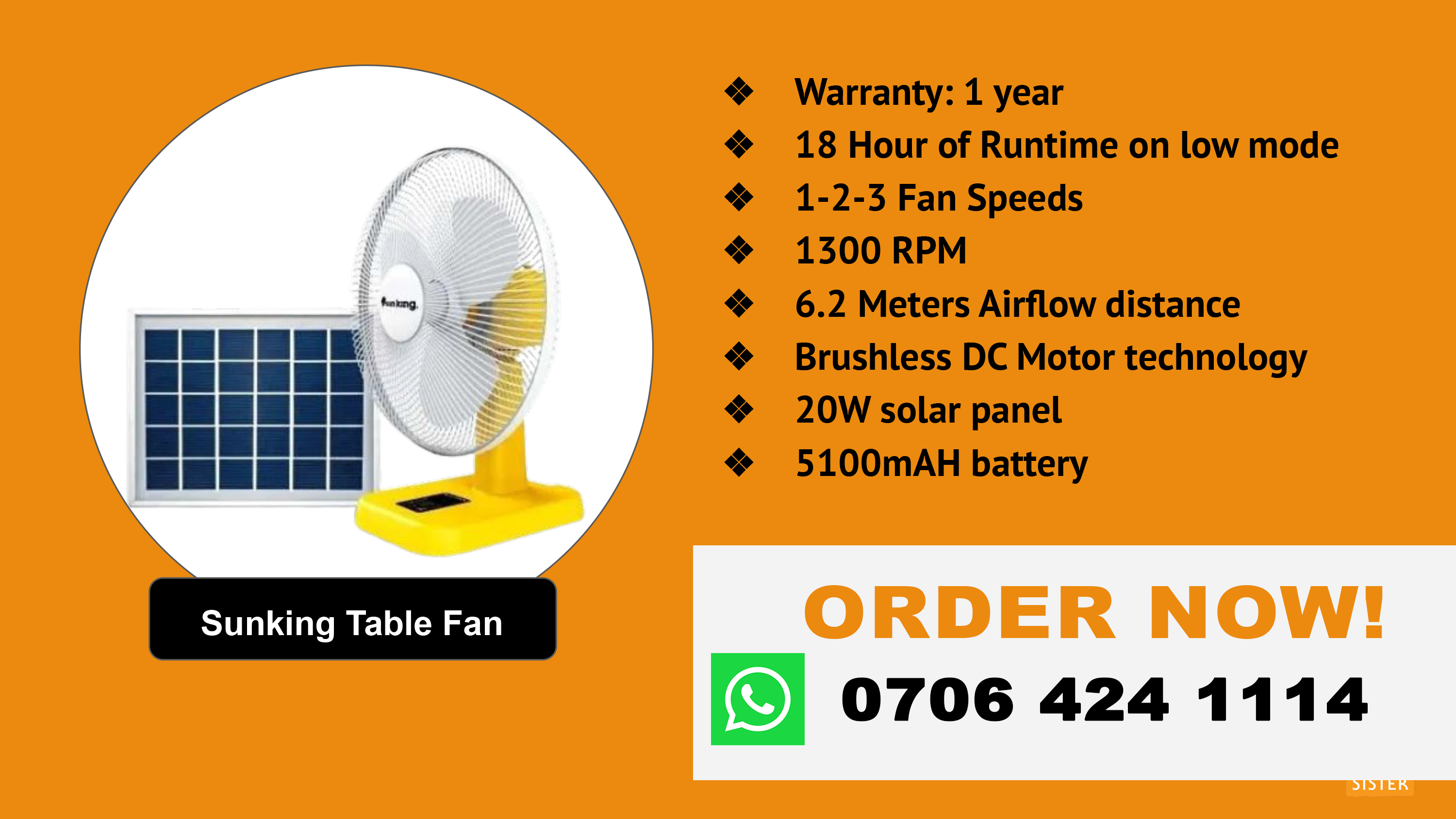

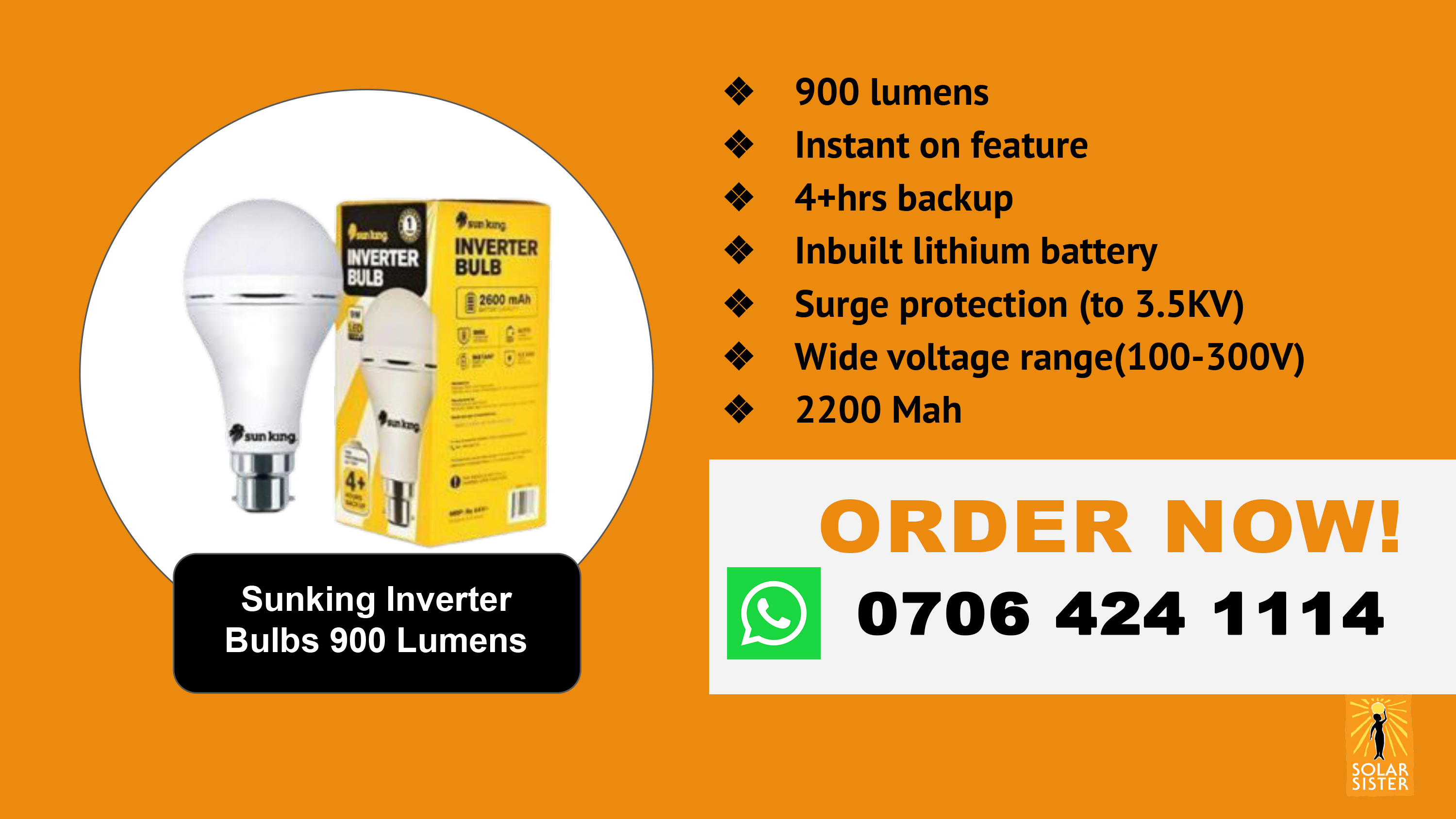















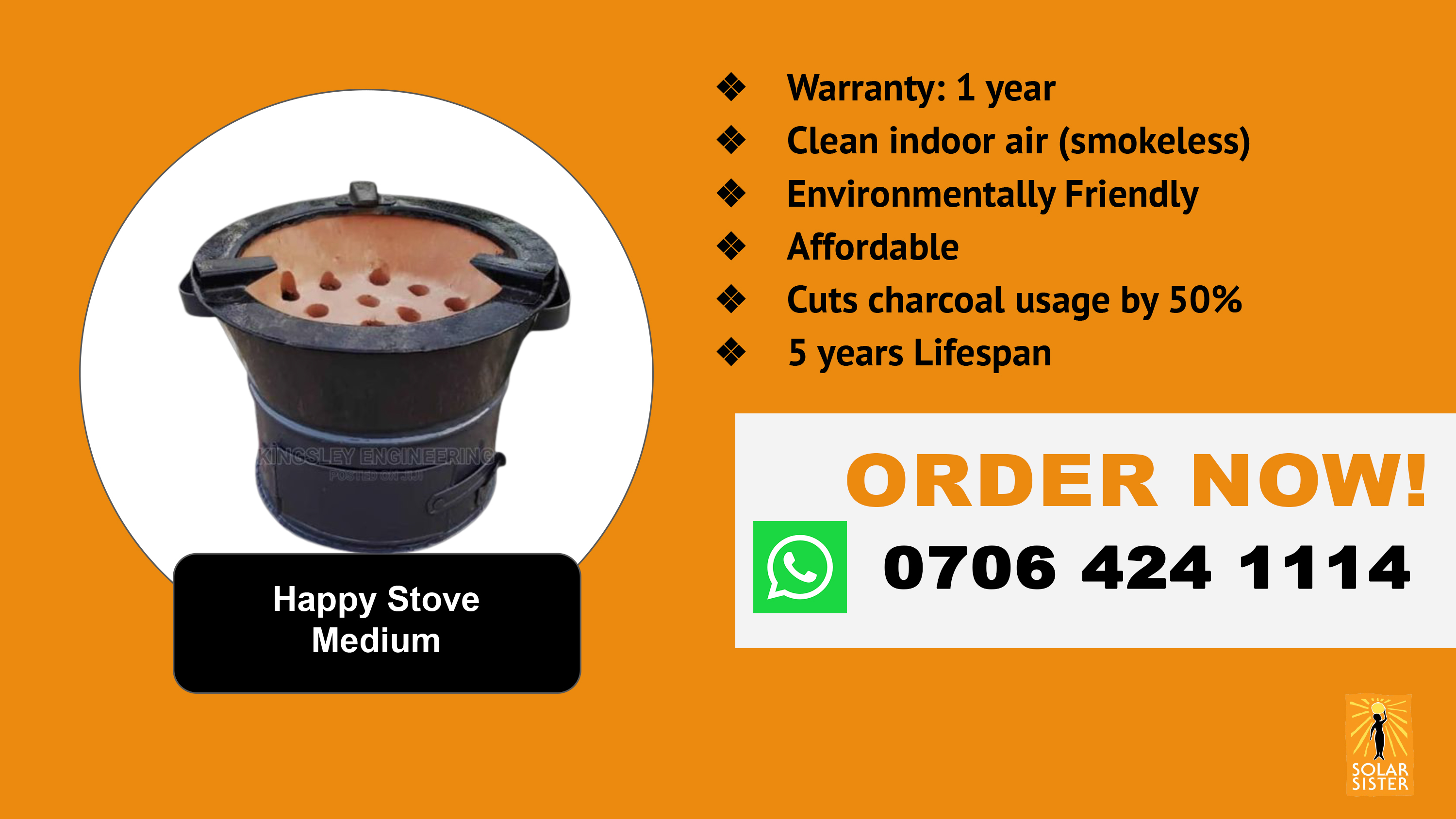






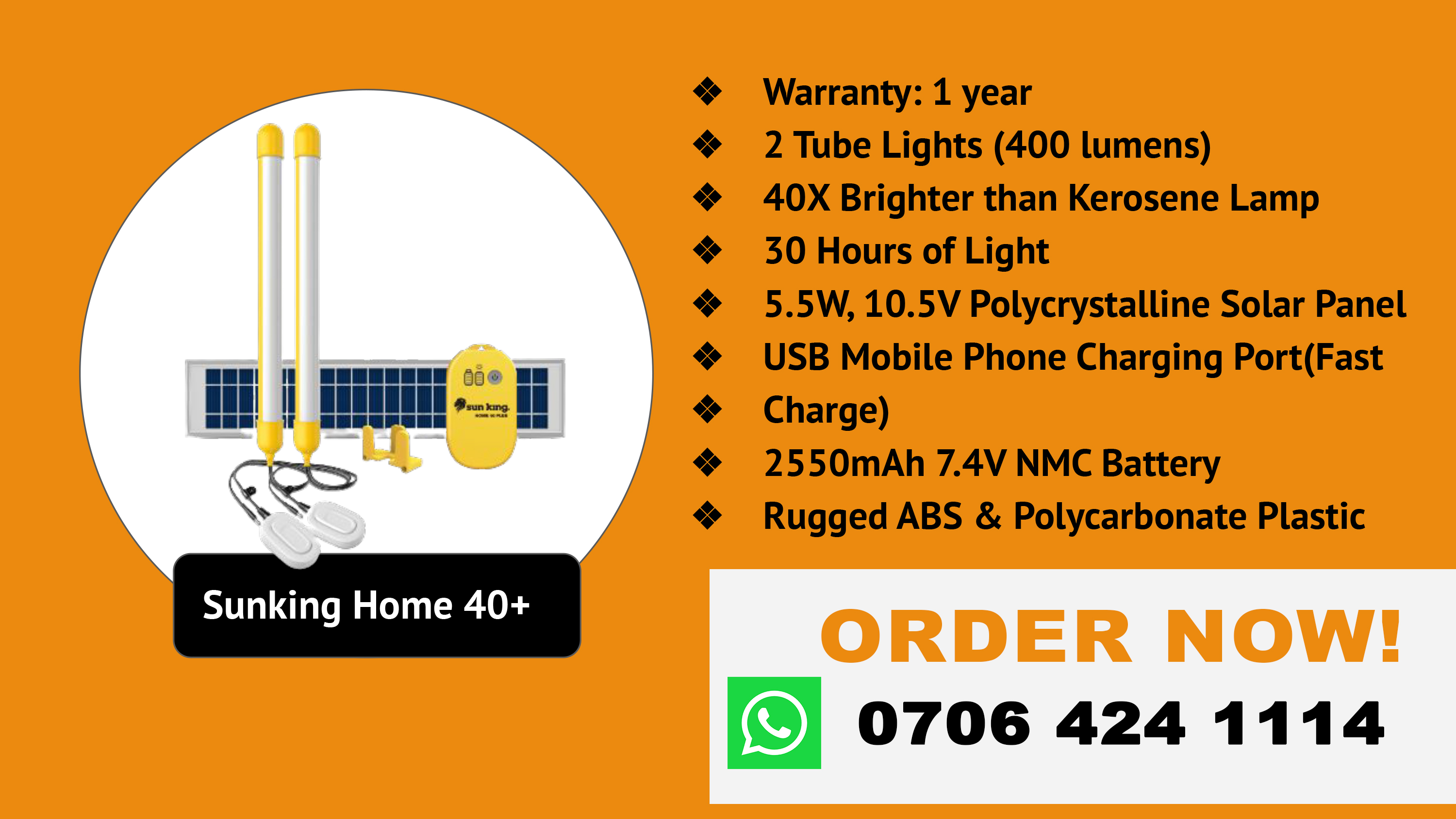



Energy storage methods
Thermal mass systems can store solar energy in the form of heat at domestically useful temperatures for daily or interseasonal durations. Thermal storage systems generally use readily available materials with high specific heat capacities such as water, earth and stone. Well-designed systems can lower peak demand, shift time-of-use to off-peak hours and reduce overall heating and cooling requirements.
Phase change materials such as paraffin wax and Glauber's salt are another thermal storage medium. These materials are inexpensive, readily available, and can deliver domestically useful temperatures (approximately 64 °C or 147 °F). The "Dover House" (in Dover, Massachusetts) was the first to use a Glauber's salt heating system, in 1948.
Solar energy can also be stored at high temperatures using molten salts. Salts are an effective storage medium because they are low-cost, have a high specific heat capacity, and can deliver heat at temperatures compatible with conventional power systems. The Solar Two project used this method of energy storage, allowing it to store 1.44 terajoules (400,000 kWh) in its 68 m³ storage tank with an annual storage efficiency of about 99%.
Off-grid PV systems have traditionally used rechargeable batteries to store excess electricity. With grid-tied systems, excess electricity can be sent to the transmission grid, while standard grid electricity can be used to meet shortfalls. Net metering programs give household systems credit for any electricity they deliver to the grid. This is handled by 'rolling back' the meter whenever the home produces more electricity than it consumes.
If the net electricity use is below zero, the utility then rolls over the kilowatt-hour credit to the next month. Other approaches involve the use of two meters, to measure electricity consumed vs. electricity produced. This is less common due to the increased installation cost of the second meter. Most standard meters accurately measure in both directions, making a second meter unnecessary.
Pumped-storage hydroelectricity stores energy in the form of water pumped when energy is available from a lower elevation reservoir to a higher elevation one. The energy is recovered when demand is high by releasing the water, with the pump becoming a hydroelectric power generator.

























